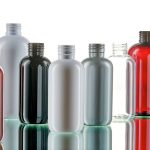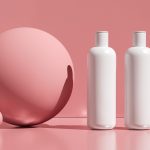4. Longer Shelf Life and Enhanced Product Integrity
Barrier Properties:
- PET bottles provide effective barriers against moisture, oxygen, and carbon dioxide, preserving the quality and extending the shelf life of the contents. Longer shelf life means less product waste and greater cost efficiency for retailers and manufacturers.
Chemical Stability:
- PET is chemically inert, meaning it does not react with the contents. This stability ensures that the products do not degrade, which reduces the need for preservatives and enhances product integrity, saving costs associated with product recalls or quality issues.
5. Sustainability and Recycling
Recyclability:
- PET is one of the most widely recycled plastics. Recycling PET reduces the demand for virgin raw materials, lowering production costs over time as recycled PET (rPET) is often cheaper than virgin PET.
- Using rPET in bottle production can significantly cut down material costs, especially as recycling technology improves and rPET becomes more available.
Consumer Appeal:
- As consumers become more environmentally conscious, the demand for recyclable packaging increases. PET bottles, being highly recyclable, can enhance a brand’s image and appeal to eco-friendly consumers, potentially driving sales and reducing marketing costs.
6. Market Competitiveness
Price Advantage:
- The cost savings associated with PET bottles allow manufacturers to price their products more competitively, making them more attractive to consumers while maintaining healthy profit margins.
- Lower packaging costs can also provide flexibility in pricing strategies, enabling promotions and discounts that can boost sales and market share.
Adaptability to Market Trends:
- PET bottles can be quickly adapted to changing market trends, such as new shapes, sizes, or labeling requirements, without significant additional costs. This adaptability allows manufacturers to respond swiftly to consumer preferences and market demands.
Conclusion
The cost-effectiveness of PET bottles stems from their lower production and material costs, reduced transportation and storage expenses, design versatility, and longer product shelf life. Additionally, their recyclability and market competitiveness contribute to overall financial advantages. For industries seeking efficient and economical packaging solutions, PET bottles offer a compelling option that balances performance, sustainability, and cost savings. As technological advancements continue to enhance the production and recycling of PET, its role as a cost-effective packaging material is likely to strengthen further.
The Cost-Effectiveness of PET Bottles: A Comprehensive Analysis. Part 1




